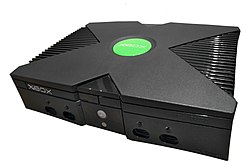As expected, Microsoft finally revealed that it will cut the price of the Xbox 360 Elite tomorrow from $400 to $300.
And as expected, the mid-range Xbox 360 Pro will be discontinued, but it will be sold for just $250 while supplies last. If you have any desire to buy Microsoft’s game console, you should jump on that deal right now. Don’t even think about buying the Elite instead. Here’s why:
The Pro includes an HD cable: In announcing the Elite’s price cut, Microsoft conveniently forgot to mention that it also scratched high definition cables from the package (you can see the omission in official photos). While the Elite used to include an HDMI cable, and the Pro included Component HD cables, the new Elite comes with AV cables only.
The Pro might score you a free controller: Engadget reportedly spotted a Target ad for Sunday, August 30, that says you get a free Xbox 360 controller when you purchase the Pro model. That’s a $50 value, and you’ll definitely want two controllers unless you only play video games alone. I’d wait for the weekend to see if this get confirmed, though.
You don’t need the Elite’s 120 GB hard drive: The console’s streaming media capabilities (through a networked PC, or through Netflix) practically eliminate the need to store music and movies on the hard drive. That leaves saved game files, which are quite small, and downloaded games. The largest Xbox Live Arcade download to date, Shadow Complex, is 835 MB, so you’re unlikely to fill a 60 GB hard drive any time soon. I have the old 20 GB Xbox 360, and I’ve filled about half of it.
Black is so Sony: Your preference may vary, but I think the Elite’s black casing is a little too hardcore, especially for a console that’ll soon be trying to reach out to the casual crowd. I don’t hear anything about Microsoft offering a white Xbox 360 Elite, which means the white casing is only available in the nearly-useless Xbox 360 Arcade.
You need the extra money for games: If you take the $300 Xbox 360 Elite, throw in a component cable ($40) and a wireless controller ($50), you’re practically back at the Elite’s old price point. Add a game or two and the bill exceeds $500. Save yourself the $140 on the Pro and go buy a few games so you can actually play the console when you get home.
 With the release of Halo 3: ODST only a short time away, that has where most of the series' focus seems to have been recently. However, E3 saw the announcement of another Halo title from Bungie, subtitled "Reach." And according to the studio's Community Manager, Brian Jarrard, it could very well be their biggest game to date.
With the release of Halo 3: ODST only a short time away, that has where most of the series' focus seems to have been recently. However, E3 saw the announcement of another Halo title from Bungie, subtitled "Reach." And according to the studio's Community Manager, Brian Jarrard, it could very well be their biggest game to date.


